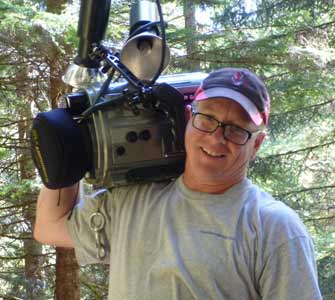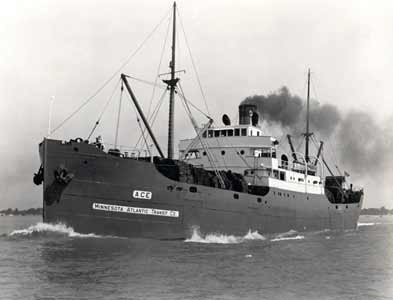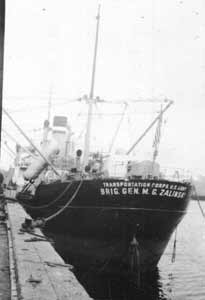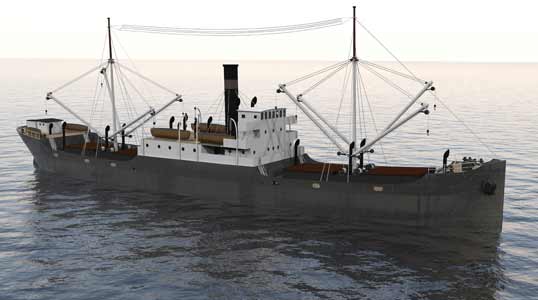Brian Nadwidny
 Brian Nadwidny lives just outside of Edmonton, Alberta in Sherwood Park. He started diving in 1980, but wasn’t introduced to the fascinating world of shipwrecks until 1989 when he was able to live in Halifax, Nova Scotia for 2 years. Since then, he has visited shipwrecks all over the world, from the Shetland Islands of the UK to Australia’s Great Barrier Reef. Even with all the overseas travel, his favourite wrecks are still the ones found in Canadian waters. In 2003 he was on an expedition to Nova Scotia, where the group found the wreck of the 8800 ton tanker “Athelviking” which was sunk in 1945 (and was the subject of his presentation at Shipwrecks 2006). He has organized many trips to the far reaches of BC’s coast to look for and explore remote wreck sites. He has also dabbled in cave diving and was part of the first team to survey and dive the “Wet Dreams” cave system on Vancouver Island.
Brian Nadwidny lives just outside of Edmonton, Alberta in Sherwood Park. He started diving in 1980, but wasn’t introduced to the fascinating world of shipwrecks until 1989 when he was able to live in Halifax, Nova Scotia for 2 years. Since then, he has visited shipwrecks all over the world, from the Shetland Islands of the UK to Australia’s Great Barrier Reef. Even with all the overseas travel, his favourite wrecks are still the ones found in Canadian waters. In 2003 he was on an expedition to Nova Scotia, where the group found the wreck of the 8800 ton tanker “Athelviking” which was sunk in 1945 (and was the subject of his presentation at Shipwrecks 2006). He has organized many trips to the far reaches of BC’s coast to look for and explore remote wreck sites. He has also dabbled in cave diving and was part of the first team to survey and dive the “Wet Dreams” cave system on Vancouver Island.
Brian is currently the president of the Alberta Underwater Council. He’s been published in Diver magazine and has spoken about his adventures at shows in the US and Canada. He owns and works at AirChekLab Inc., which does analysis on supplied breathing air to ensure it meets CSA standards.
Environmental Time Bomb. The USAT Brig. Gen. Zalinski.
 In January 1946 the US Army Transport Ship Brigadier General Zalinski (previously “Lake Frohna” and “Ace”) sank in a storm in British Columbia’s Grenville Channel while on its way to Alaska. It had a mixed load of cargo including vehicles, mail, and 500 and 1000 lb aerial bombs. All the crew was rescued and the ship lay undisturbed and forgotten until 2003, when oil slicks were noticed in the channel. The Coast Guard mounted an ROV survey of the area and found that the source of the oil was leaks coming from the hull of the wreck, which was found upside down on a shelf in 130’. The riveted hull was starting to come apart and the estimated 700 tons of bunker fuel was starting to leak out. The Canadian Coast Guard patched the leaks but slicks appeared again around 2010, with things reaching a head in 2012 when local aboriginal groups demanded that a final solution be found as a major release of oil would be devastating to shellfish in traditional fishing grounds. In the fall of 2013 a cleanup with an estimated cost of $50 million dollars was launched by the Canadian government and the oil was removed by hot tapping and steam injection.
In January 1946 the US Army Transport Ship Brigadier General Zalinski (previously “Lake Frohna” and “Ace”) sank in a storm in British Columbia’s Grenville Channel while on its way to Alaska. It had a mixed load of cargo including vehicles, mail, and 500 and 1000 lb aerial bombs. All the crew was rescued and the ship lay undisturbed and forgotten until 2003, when oil slicks were noticed in the channel. The Coast Guard mounted an ROV survey of the area and found that the source of the oil was leaks coming from the hull of the wreck, which was found upside down on a shelf in 130’. The riveted hull was starting to come apart and the estimated 700 tons of bunker fuel was starting to leak out. The Canadian Coast Guard patched the leaks but slicks appeared again around 2010, with things reaching a head in 2012 when local aboriginal groups demanded that a final solution be found as a major release of oil would be devastating to shellfish in traditional fishing grounds. In the fall of 2013 a cleanup with an estimated cost of $50 million dollars was launched by the Canadian government and the oil was removed by hot tapping and steam injection.
In 2008 a group of divers from Alberta chartered a liveaboard dive boat to explore this rarely dove area of the west coast, with the specific aim of finding and filming the Zalinski. They were successful and returned again in 2010 and 2012. The video footage taken during the 3 trips has been used by the Canadian Navy, Canadian Coast Guard, CBC, GlobalTV and others, as no other footage exists. Brian will talk about the trips and the politics surrounding the wreck. He will also give a brief update on the “Transpac” wreck, which is in the same area and was the subject of a presentation at the Shipwrecks 96 show.
 |
 |
 Speakers & Presentations
Speakers & Presentations